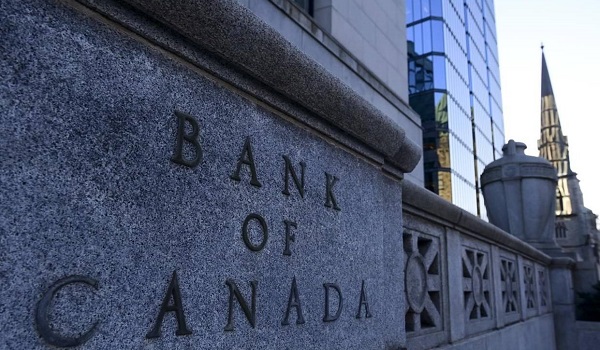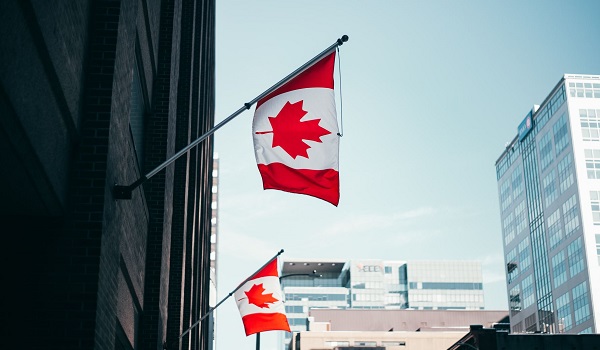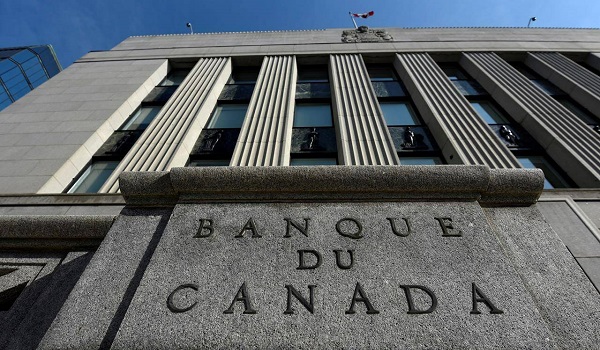Bank of Canada expected to keep interest rates fixed as economy stalls
The Bank of Canada is expected to pause its monetary policy tightening campaign this week, weighing stubborn inflation data against growing evidence that the Canadian economy has begun to stall.
Analysts expect the central bank will keep its benchmark interest rate at 5 per cent Wednesday, after hikes in June and July.
There’s a widespread belief on Bay Street that Canadian interest rates have peaked, according to polls and swap market data, with no more hikes needed to wrestle inflation back under control. But economists don’t expect the central bank to signal a formal end to its tightening campaign this week, given the risk that inflation could push higher.
Bank of Canada Governor Tiff Macklem “will need to see more disinflationary momentum for that, and it could be some months before we’ll have enough labour market slack for the bank to be comfortable in stating that rates are high enough to do the job,” Canadian Imperial Bank of Commerce chief economist Avery Shenfeld wrote in a note to clients.
“But if they skip a hike in September, we expect that the balance of risk calculation will ultimately clarify that rates have in fact peaked for this cycle.”
The Bank of Canada first paused its tightening campaign in January, offering a brief respite to homeowners and other borrowers who had been hammered by eight consecutive rate hikes over the previous year.
This “conditional pause” did not last long. In June, Mr. Macklem and his team raised interest rates again in response to strong consumer spending and employment data, as well as an unwelcome surge in real estate prices through the spring. The central bankers hiked rates again in July and warned that inflation could take longer than previously expected to fall back to the bank’s 2-per-cent target.
Over the past month, however, key economic indicators have begun moving in the direction the bank wants to see as it attempts to slow down the economy to curb inflation.
Canada shed 6,400 jobs in July, and the unemployment rate rose to 5.5 per cent, up half a percentage point over three months. Meanwhile, sluggish retail sales data for late spring and early summer suggest Canadian shoppers are beginning to tap out.
The strongest evidence of a slowdown came Friday, with the publication of weaker-than-expected GDP data. Economic activity contracted at an annualized rate of 0.2 per cent in the second quarter, Statistics Canada said, led by a drop in new construction and a slowdown in consumer spending, alongside a hit to resource industries affected by wildfires. The Bank of Canada had been expecting 1.5-per-cent annualized growth in the quarter.
“Between the half-point rise in the unemployment rate in the past three months – a clear and present warning sign – and the big slowdown in GDP, it’s quite apparent that past rate hikes are now weighing heavily on households, and that it’s a matter of time until that translates into cooler underlying inflation trends,” Bank of Montreal chief economist Doug Porter wrote in a note to clients.
But one key metric isn’t moving in the right direction: inflation itself. Annual Consumer Price Index inflation rose to 3.3 per cent in July from 2.8 per cent in June, moving back out of the central bank’s 1-per-cent to 3-per-cent target band. Some measures of core inflation, which filter out volatile price movements, ticked lower. But most of these measures continue to run in the 3.5-per-cent to 4-per-cent range.
Inflation is a long way down from the 8.1 per cent reached in June, 2022. But much of this disinflation has come from favourable year-over-year oil-price comparisons that are no longer weighing on the CPI. Mr. Macklem warned in July that inflation could get stuck around 3 per cent if the central bank is not careful.
Interest-rate hikes work with a considerable lag, and the Bank of Canada sets monetary policy based on where it thinks inflation is heading, not where it is today. That means central bankers need to balance the risk of doing too little to control runaway prices against the risk of doing too much and causing a painful recession.
This calculus is particularly tough at the moment, given that rate hikes don’t appear to be as potent as in the past. That has left central bankers wondering if they need to raise rates more or simply give hikes more time to work their way through the economy.
One thing seems certain: Interest-rate cuts aren’t on the near horizon, even with signs that the economy may be entering a mild recession, which is often defined as two quarters of negative growth.
“The Bank of Canada has one mandate – and that’s to maintain inflation at their target rate,” Nathan Janzen, Royal Bank of Canada’s assistant chief economist, said in an interview.
“So we think that they’ll be more cautious about pulling back on the monetary policy brakes or pulling back on interest-rate hikes than they might have been in the normal economic cycle. And they won’t rush to cut rates when they see the economy starting to soften.”
Wednesday’s rate announcement will be a one-page affair, with no accompanying economic forecast. Mr. Macklem will deliver a speech the following day in Calgary, his first public comments since the July rate announcement.
This article was reported by Globe and Mail
















